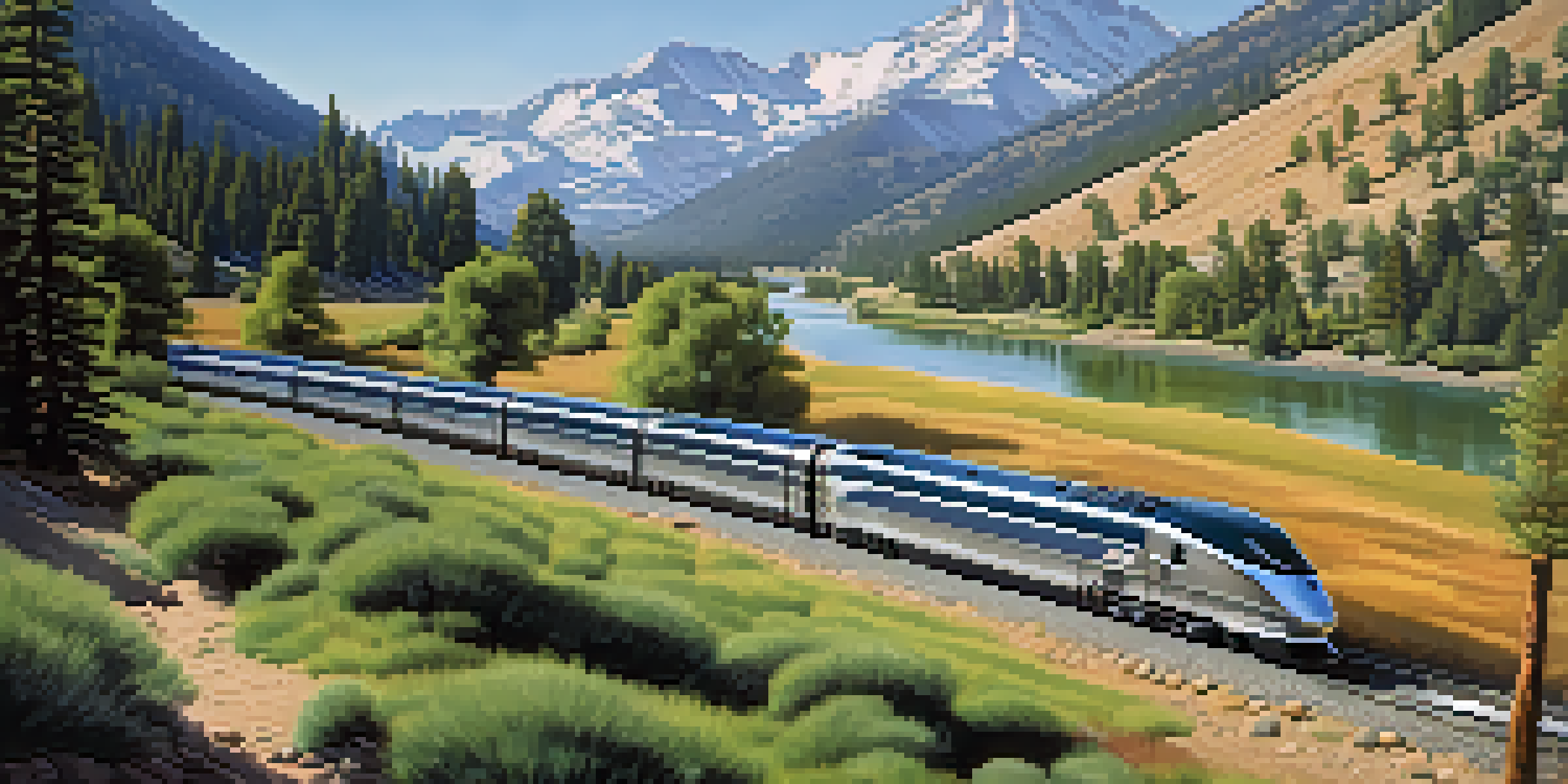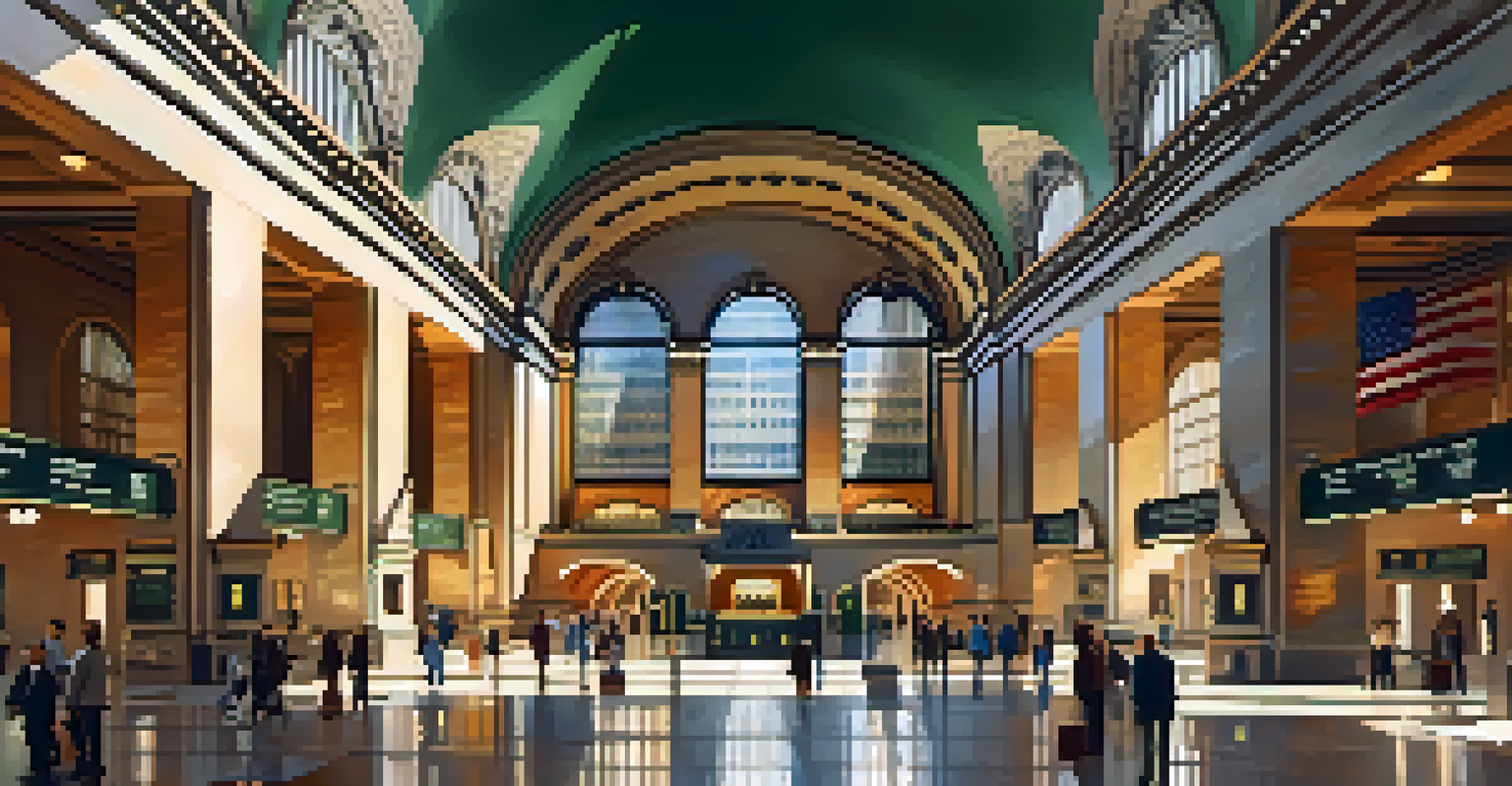Historic Rail Journeys: A Guide to America's Train History

The Birth of America’s Railroads: A Transformative Era
The story of America's railroads begins in the early 19th century, marking a transformative era for transportation. In 1825, the first successful steam locomotive, the 'Locomotion No. 1', paved the way for a network that would connect vast regions of the country. This innovation not only made travel faster but also facilitated commerce, linking cities and rural areas alike.
The railroad is a great equalizer. It has brought the nation together, and it is a symbol of progress and innovation.
As railroads expanded, they played a crucial role in the westward expansion of the United States. The construction of the Transcontinental Railroad in 1869 united the East and West coasts, enabling people to move across the country with unprecedented ease. This monumental achievement symbolized hope and opportunity for many Americans during a time of rapid change.
Railroads also had a profound impact on the economy, stimulating industries like steel and coal. They became the backbone of the American economy, allowing goods to be transported efficiently. With trains carrying everything from crops to manufactured goods, the railroad era reshaped the landscape of American life.
Iconic Routes: The Scenic Journeys of America
Among the myriad of train routes, certain journeys have become legendary, offering breathtaking views and memorable experiences. The California Zephyr is a prime example, winding through the Sierra Nevada and Rocky Mountains, showcasing stunning landscapes that are simply unforgettable. Passengers experience the beauty of nature, from snow-capped peaks to lush valleys, all while enjoying the charm of train travel.

Another iconic route is the Amtrak's Coast Starlight, which runs from Los Angeles to Seattle. This journey takes travelers along the beautiful Pacific coastline, with panoramic ocean views that create a picturesque backdrop. It's not just about the destination; the journey itself becomes a cherished memory for many.
Railroads Transformed America
The expansion of railroads in the 19th century revolutionized transportation and commerce, connecting vast regions and boosting the economy.
These scenic train rides also evoke nostalgia, allowing passengers to step back in time and appreciate the artistry of rail travel. Each route tells a unique story, connecting travelers to the rich history of the regions they traverse, making every trip an adventure in its own right.
The Golden Age of Railroads: A Time of Luxury
The late 19th and early 20th centuries marked the Golden Age of Railroads, characterized by luxurious train travel. During this period, railroads like the Pullman Company revolutionized the passenger experience with opulent sleeping cars and fine dining services. Traveling by train became synonymous with sophistication, attracting the affluent and adventurous alike.
Trains are a reminder of the journey, not just the destination.
Trains like the 'Orient Express' and 'Twentieth Century Limited' epitomized this era, offering lavish amenities and exceptional service. Passengers enjoyed gourmet meals served in elegant dining cars while being whisked away across the country in style. This luxurious experience created a sense of romance around train travel that persists today.
Even as airplanes became more popular, the allure of luxury rail travel endured. Today, there are still modern services that pay homage to this golden age, offering travelers a taste of nostalgia and comfort on the tracks. The combination of historical charm and contemporary convenience continues to attract enthusiasts and curious travelers.
The Role of Railroads in American Culture and Identity
Railroads have played a significant role in shaping American culture and identity. They symbolize freedom and exploration, representing the spirit of adventure that defines the American ethos. Songs, movies, and literature often romanticize the journey by train, capturing the imagination of generations.
From the famous folk song 'I've Been Working on the Railroad' to movies like 'Trainspotting,' trains have found a special place in the collective consciousness. They serve as a backdrop for stories of love, loss, and discovery, making them more than just a mode of transport.
Iconic Scenic Train Journeys
Routes like the California Zephyr and Coast Starlight offer breathtaking views and memorable experiences, highlighting the beauty of train travel.
Additionally, trains have become a symbol of progress and innovation, reflecting the technological advancements of their time. The railroad industry not only transformed transportation but also influenced social changes, integrating communities and fostering connections that are still valued today.
Challenges and Changes: The Decline of Railroads
Despite their glory days, railroads faced challenges in the latter half of the 20th century. The rise of automobiles and commercial airlines significantly impacted passenger numbers, leading to a decline in railroad use. As highways expanded and air travel became more accessible, many railroads struggled to maintain their relevance.
The decline in ridership forced many lines to cut routes and reduce services, leaving some regions isolated. This shift not only affected the economy but also changed the cultural landscape, as train travel became less common. However, it also sparked efforts to revitalize and modernize the rail system.
In recent years, there has been a resurgence of interest in train travel, driven by a desire for sustainable transportation and a nostalgic appreciation for the past. Initiatives to revitalize rail networks and enhance services are underway, demonstrating that while challenges exist, the legacy of railroads continues to evolve.
Modern Rail Travel: Innovations and Sustainability
Today, rail travel is experiencing a renaissance, with innovations that enhance the passenger experience. High-speed trains, such as Amtrak's Acela Express, are redefining how we think about train journeys. These modern marvels offer quick and comfortable travel, making them a viable alternative to flying for many travelers.
Moreover, rail travel is increasingly seen as a more sustainable option compared to cars and planes. With a lower carbon footprint, trains provide an eco-friendly alternative that aligns with growing environmental concerns. This shift in perspective is encouraging more people to consider trains for their travel needs.
Resurgence of Modern Rail Travel
Today's rail travel is innovating with high-speed trains and sustainable practices, rekindling interest in this eco-friendly transportation option.
As technology continues to advance, we can expect even greater developments in the rail industry. Innovations like automated systems and improved energy efficiency promise to make train travel faster, safer, and more environmentally friendly, ensuring that railroads remain a vital part of America's transportation landscape.
Exploring America’s Historic Train Stations
Historic train stations are more than just depots; they are architectural gems that tell the story of America’s rail history. From New York's Grand Central Terminal to Chicago's Union Station, these buildings reflect the grandeur and significance of rail travel. Each station has its unique style and charm, often featuring beautiful designs and intricate details.
Visiting these iconic stations allows travelers to step into the past and appreciate the role they played in shaping communities. Many stations have been preserved or restored, becoming cultural landmarks that host events, shops, and dining options. They serve as a reminder of a time when train travel was the primary means of long-distance transportation.

As you explore America, take the time to visit these historic stations. They not only offer a glimpse into the architectural beauty of the era but also connect you to the rich tapestry of stories that have unfolded on the rails. Each station is a portal to the past, inviting travelers to appreciate the heritage of train travel.